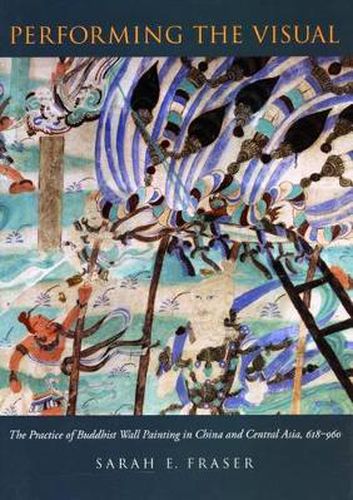Readings Newsletter
Become a Readings Member to make your shopping experience even easier.
Sign in or sign up for free!
You’re not far away from qualifying for FREE standard shipping within Australia
You’ve qualified for FREE standard shipping within Australia
The cart is loading…






Performing the Visual explores the practice of wall painting in China from a new perspective. Relying on rare, virtually unpublished drawings on Buddhist themes from a long-hidden medieval library in western China, the author analyzes the painters’ pictorial strategies. She also examines the financial accounting of Buddhist temples, providing practical information that ninth- and tenth-century critics ignored: how artists were paid and when, the temple’s role as mediator between patrons and artists, and the way painters functioned outside the monastic system, working in guilds and secular academies affiliated with local government.
Based on the careful study of hundreds of inaccessible wall paintings at Dunhuang, arguably Asia’s largest and most important Buddhist site, the author shows that although critics celebrated spontaneous feats with brush and ink, artists at Dunhuang were heavily dependent on concrete tools such as sketches in the preparation of wall painting.
$9.00 standard shipping within Australia
FREE standard shipping within Australia for orders over $100.00
Express & International shipping calculated at checkout
Performing the Visual explores the practice of wall painting in China from a new perspective. Relying on rare, virtually unpublished drawings on Buddhist themes from a long-hidden medieval library in western China, the author analyzes the painters’ pictorial strategies. She also examines the financial accounting of Buddhist temples, providing practical information that ninth- and tenth-century critics ignored: how artists were paid and when, the temple’s role as mediator between patrons and artists, and the way painters functioned outside the monastic system, working in guilds and secular academies affiliated with local government.
Based on the careful study of hundreds of inaccessible wall paintings at Dunhuang, arguably Asia’s largest and most important Buddhist site, the author shows that although critics celebrated spontaneous feats with brush and ink, artists at Dunhuang were heavily dependent on concrete tools such as sketches in the preparation of wall painting.